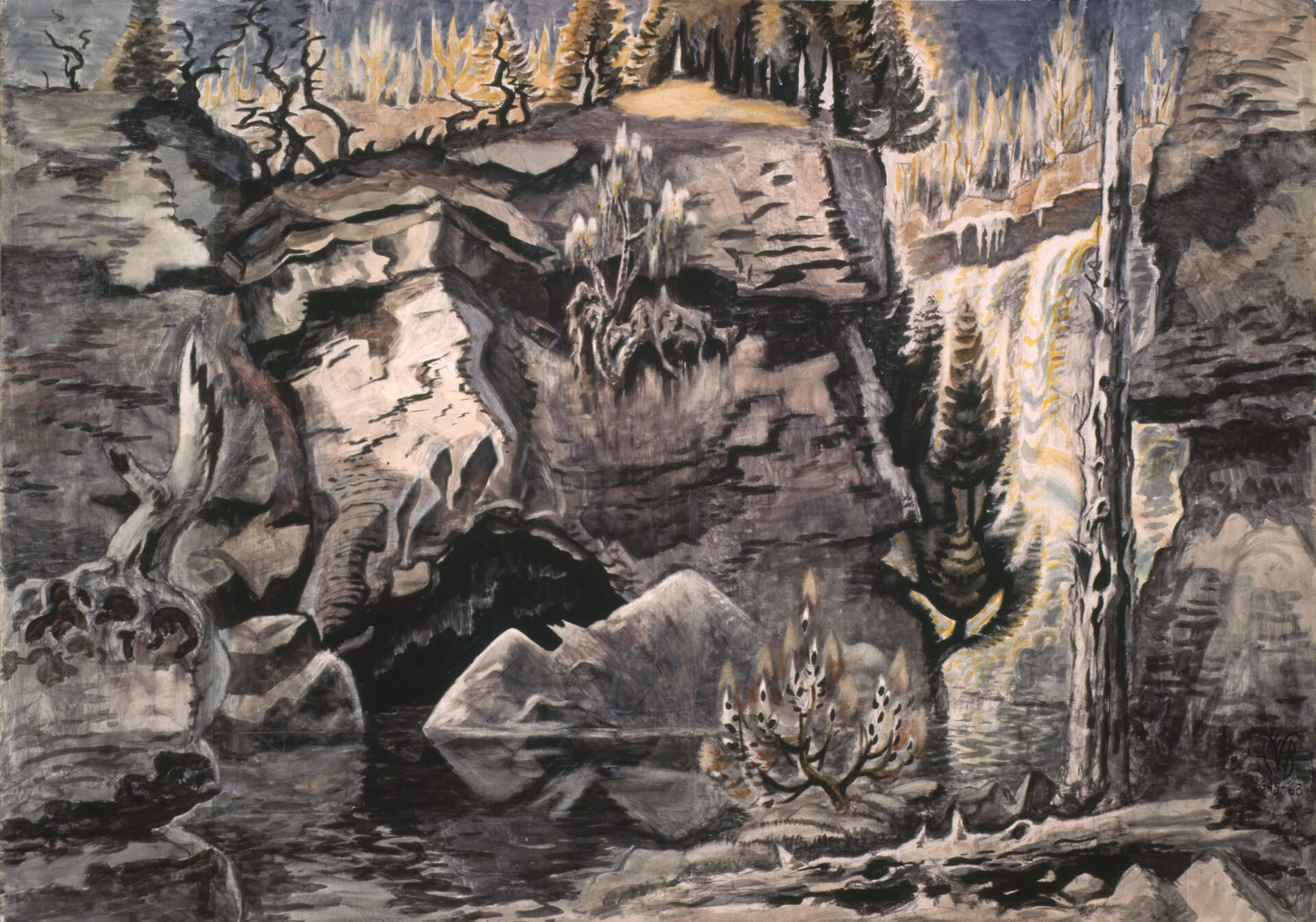Charles E. Burchfield (1893-1967)Solitude
[1918] 1944-63
watercolor and charcoal on joined paper mounted on board
42 x 60 inches
Collection of the Burchfield Penney Art Center, Gift of Charles Rand Penney, 1994
Inspired by Thoreau, among others, Burchfield appreciated solitude and valued the heightened emotions he experienced on his solitary trips to paint. In 1963 he wrote about why he embedded an early painting within an increasingly complex composition that he spent two decades composing. It resonates with elements of nature that reflect a world that suffered through wars yet remains hopeful through the eternal rebirth of spring.
The beginning of this picture was a small water-color (27x20) painted in Bedford Glens, South of Cleveland, Ohio in 1918. The original water-color has been incorporated in the final painting.
Subsequent studies for the painting were made at Rock City, southwest of Olean, N.Y., the Cattaraugus Gorge east of Gowanda; the Niagara Gorge, and the Gorge at Letchworth Park—the material freely treated.
The aim here has been to present a study in contrasts in Nature—the austere and the joyous, the former represented by the forbidding frowning cliffs, and the ominous cave, the latter by the up-shooting, bristling trees and the tumultuous waterfall, all bathed in the brilliant yellow sunshine of early Spring. A further note of gayety is added by placing a willow in bloom in the very midst of the more grim material.
Solitude started in 1918 as a small painting entitled The Cave and Cliff, which he literally mounted into the current composition in the mid-1940s in order to make additions. His introspective identification with nature is full of contrasts between "the austere and the joyous," as he wrote, represented by "Forbidding, 'frowning' cliffs...the ominous cave,...and up-shooting, bristling trees, and the tumultuous waterfall, all bathed in the brilliant yellow sunshine of early Spring." In addition to reflecting an individual's concerns after 45 years of turbulent world history, Solitude also was intended to convey the struggle and power that he heard in the Fifth Symphonies of Beethoven and Sibelius. It's creation bridges World War I, World War II, and the Vietnam War eras. — Nancy Weekly
